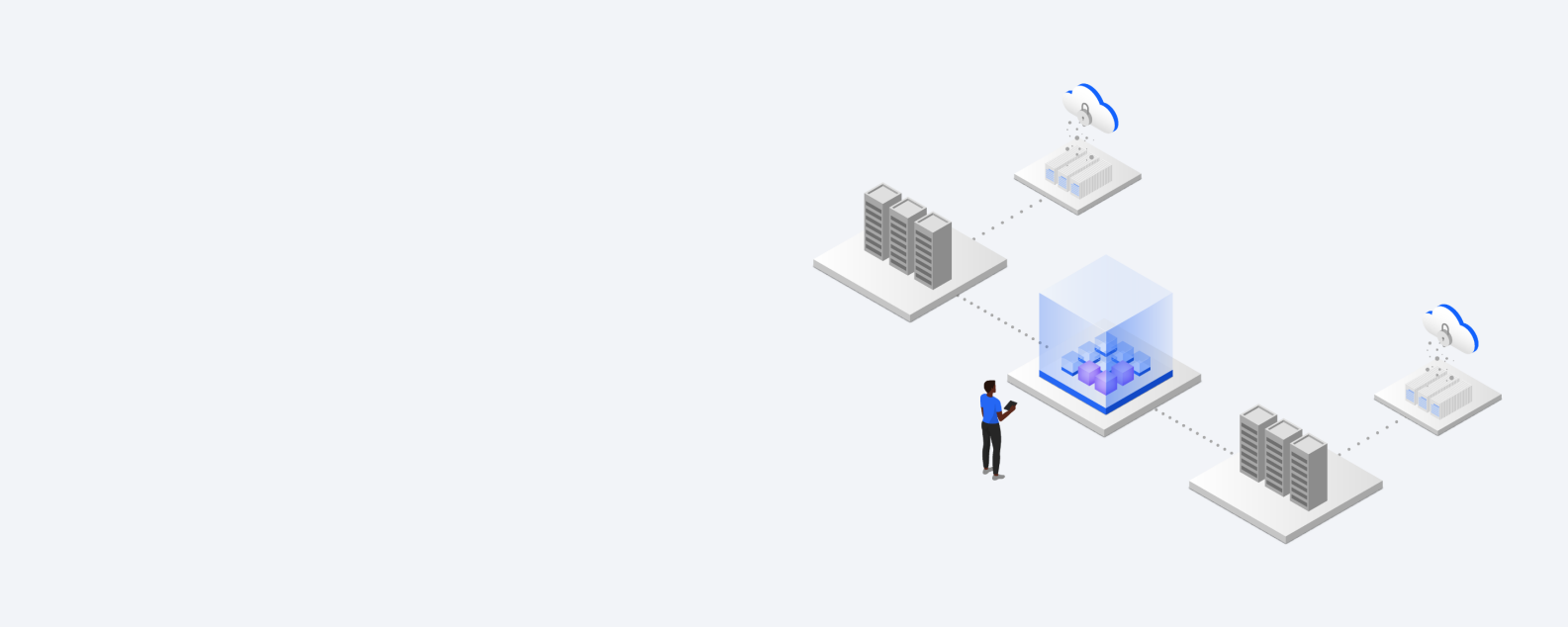
Integrating cloud into your existing enterprise security program is not just about adding a few more controls or point solutions. It requires an assessment of your resources and business needs to develop a fresh approach to your culture and cloud security strategy. To manage a cohesive hybrid, multicloud security program, you need to establish visibility and control. IBM Security® products and experts can help you integrate the appropriate controls, orchestrate workload deployment and establish effective threat management.
Data theft and leaks accounted for 32% of the impacts of cyberattacks in 2023. Check out the new report to learn how to best safeguard your people and data.
Protect the Hybrid Cloud with Zero Trust
Subscribe for security topic updates
Understand the future state of your business and risk-based security program. Establish cloud security at every layer of the stack to enable your business goals.
Integrate native cloud security controls, implement secure-by-design methodology and establish security orchestration and automation to define and enforce your enterprise cloud security program.
Through centralized visibility and control, your enterprise will be able to monitor and adapt to the threat landscape. Detect and contain attacks by orchestrating effective organization-wide incident response.
Manage threat and event information with precise insights to adapt to new threats and rapidly detect and respond to attacks.
Locate, classify, secure and manage your critical data wherever it resides. Keep your own cloud data encryption keys.
Identify and manage who has appropriate levels of access across your hybrid multicloud environment.
Connect to data sources without moving your data, and act faster with orchestration and automation across tools and teams.
Manage and protect your mobile devices from one single console and prevent cyberthreats such as phishing from happening.
Authenticate customers, detect fraud and protect against malicious users across all channels.
Begin with a holistic cloud security risk-based strategy, governance and readiness plan.
Build, deploy and manage secure-by-design workloads.
Engage a global team of hackers to break into your organization and uncover risky vulnerabilities.
Use a smarter security framework to manage the full threat lifecycle.
Get comprehensive data protection for the most critical enterprise data.
Navigate your journey to a successful cloud identity and access management (IAM) program migration.
NHS Digital engaged IBM as its strategic Cyber Security Operations Centre (CSOC) partner to provide enhanced security services and support.
With IBM Security services and technology, ANDRITZ can proactively detect and understand the severity, scope and root cause of threats before they impact the business.
CIB partnered with IBM to reduce manual identity governance efforts by providing secure and transparent identity management of 8,000 employees.
Explore the Cost of a Data Breach Report and discover how to mitigate the costs.
Learn how threat actors target the cloud. This report includes dark web analysis, X-Force Red penetration testing data, IBM Security Services metrics, and more.
Understand cloud security, a collection of procedures and technology designed to address external and internal threats to business security, and how to apply them.
Get actionable insights to help you understand how threat actors are waging attacks, and how to proactively protect your organization.
Find out how to secure your hybrid cloud, drive innovation and coordinate incident response to minimize risk to your organization.
Read about 2022 X-Force Cloud Threat Landscape Report findings that businesses are still introducing security risk into cloud environments.